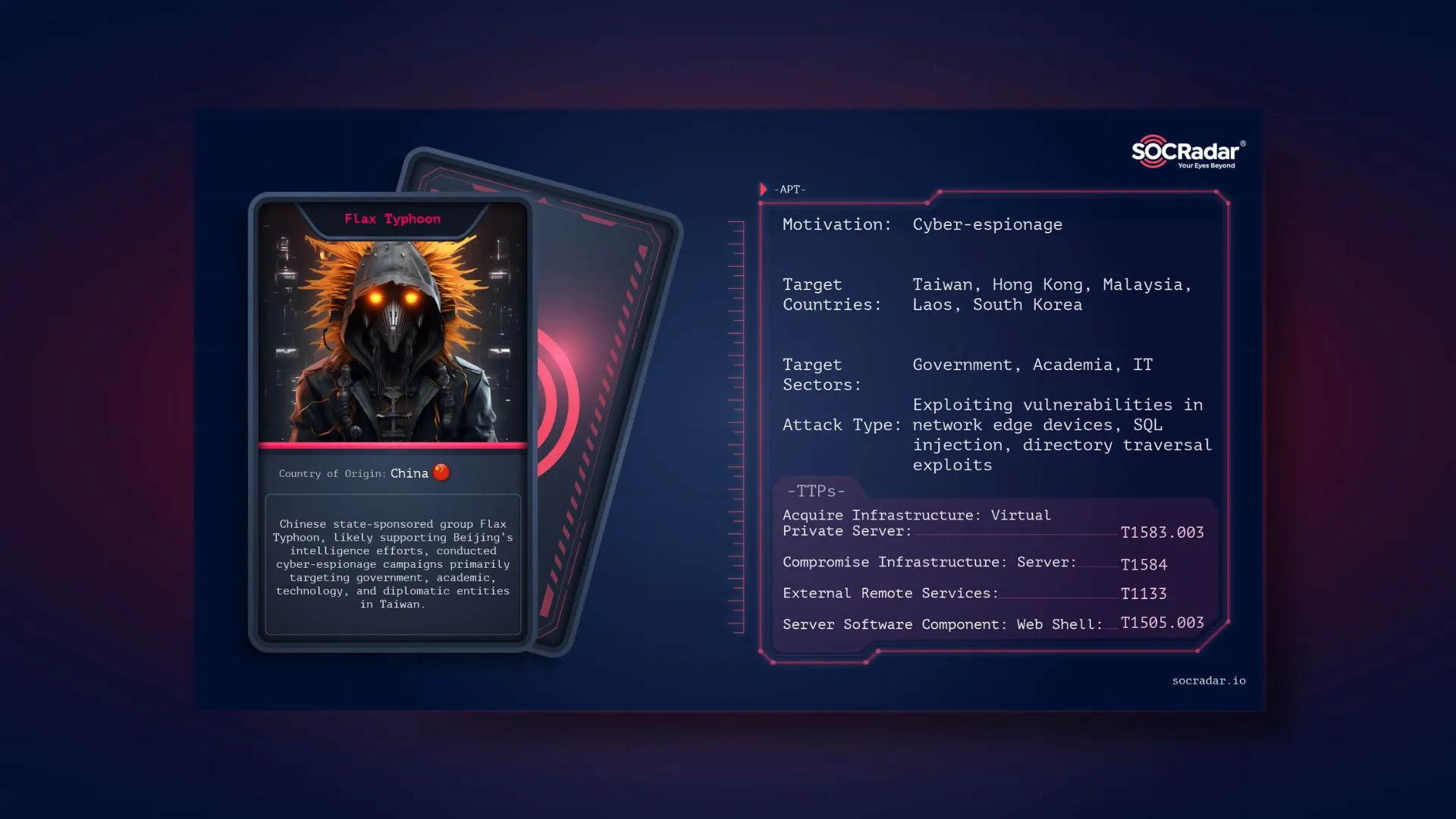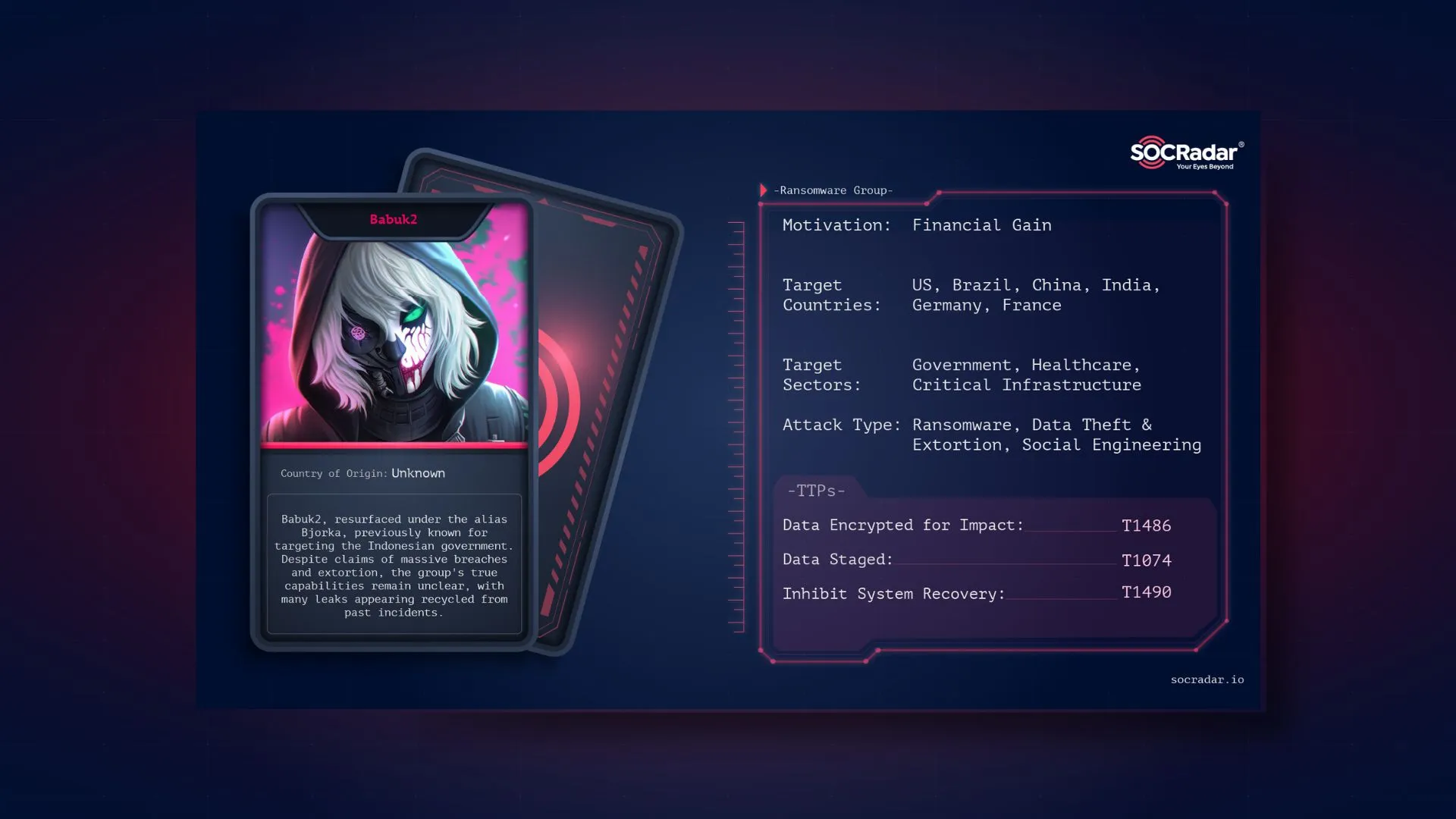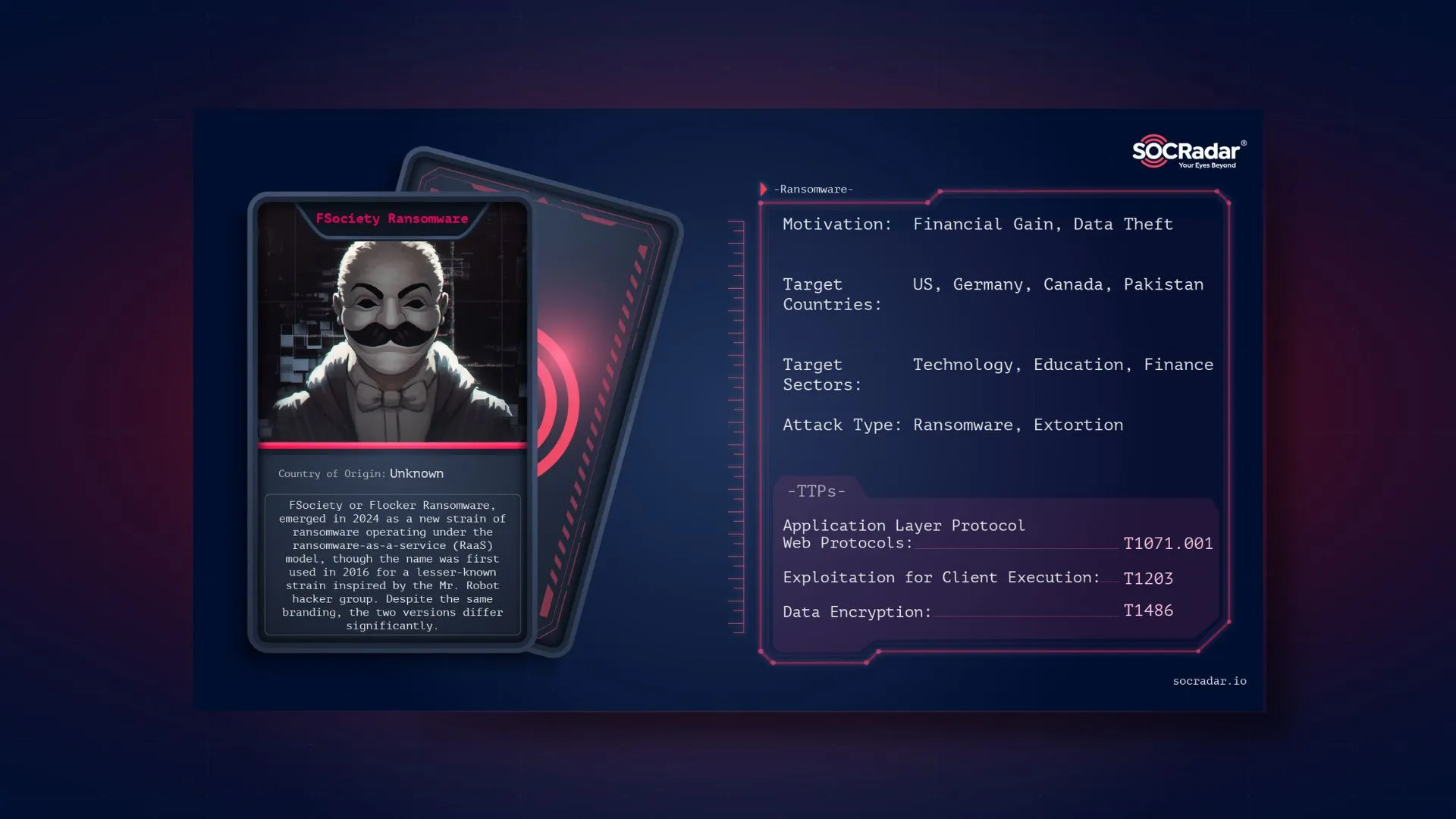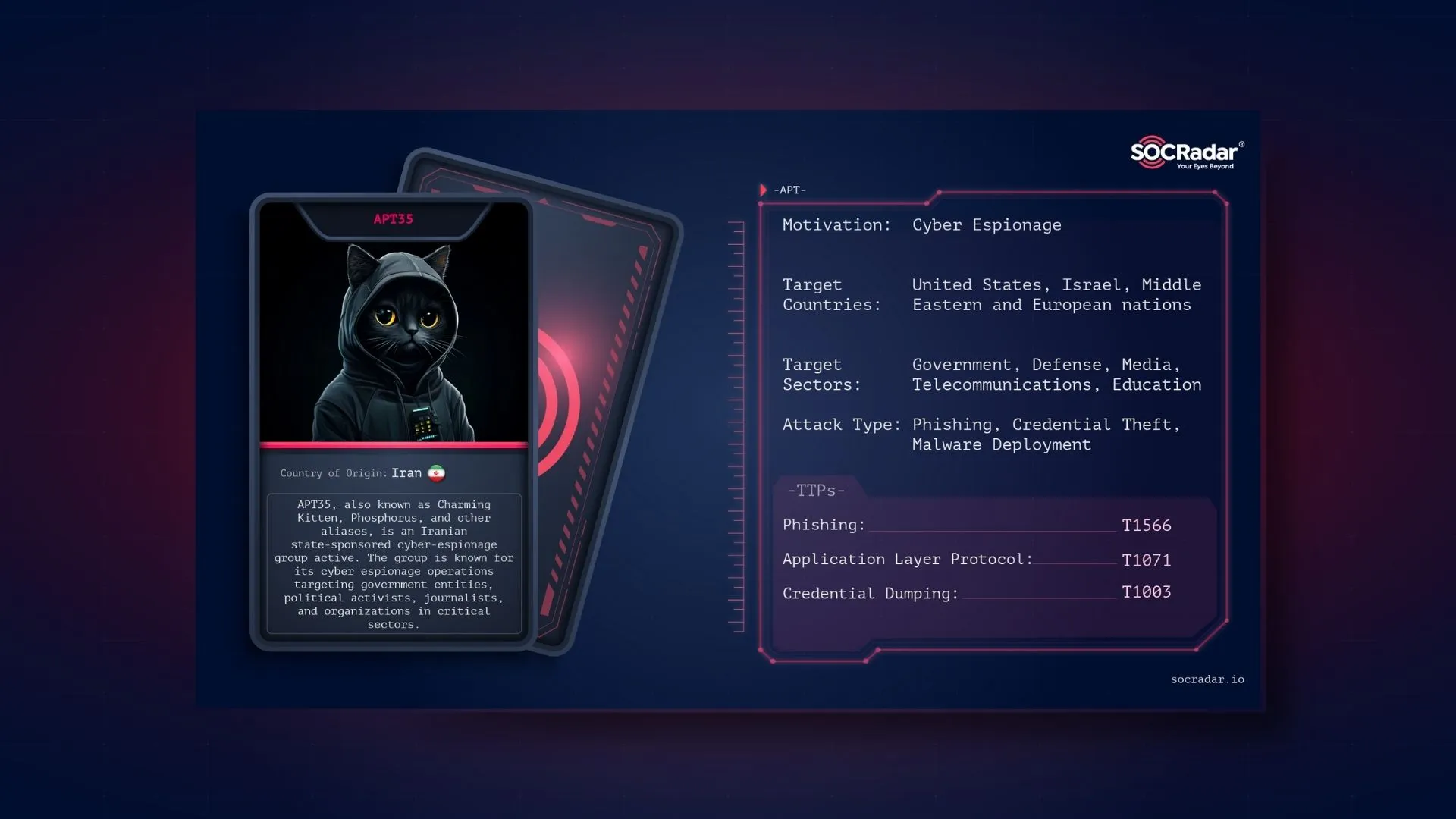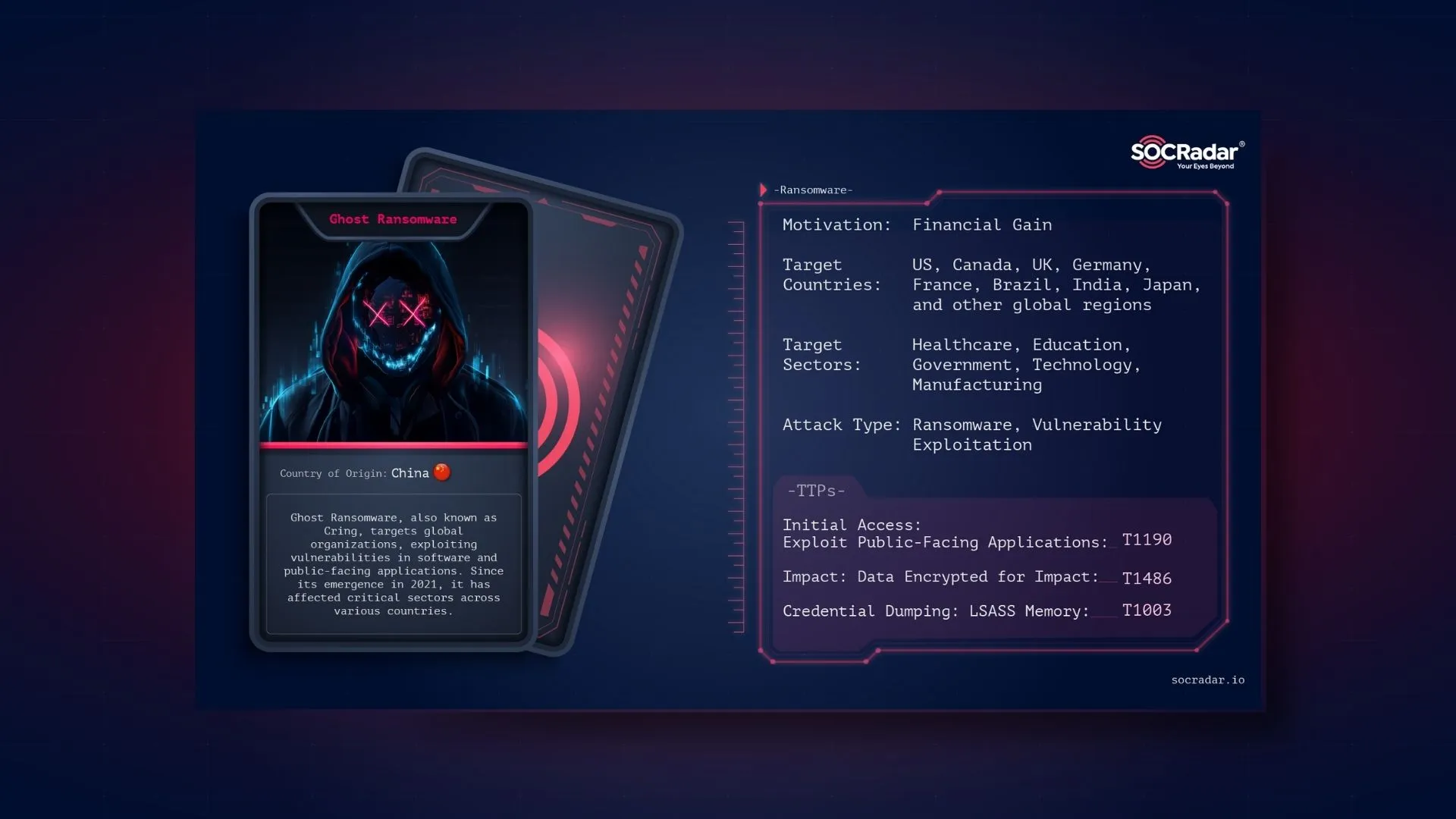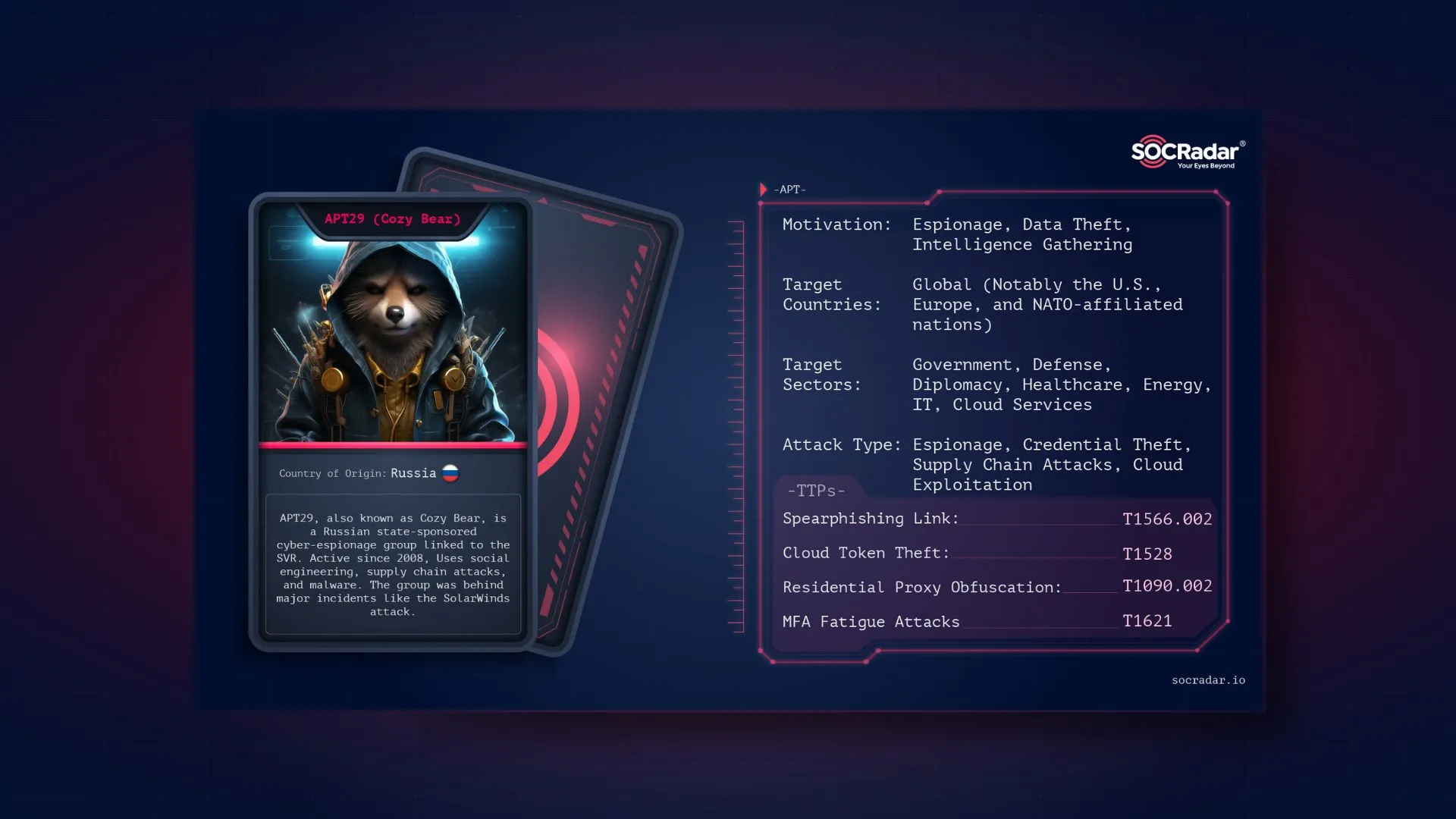
APT Profile: Cozy Bear / APT29
[Update] October 11, 2024: “Joint Advisory Warns of Mass Exploitation of Zimbra and TeamCity Servers by APT29”
[Update] February 27, 2024: See the subheading: “Joint Advisory on APT29’s Recent Initial Cloud Access Tactics”
[Update] November 16, 2023: See the subheading: “APT29 Exploits WinRAR Vulnerability (CVE-2023-38831) in European Embassy Attacks.”
[Update] August 3, 2023: Microsoft identified a new wave of social engineering attacks by APT29. See the subheading: “APT29’s New Phishing Lures Involve Microsoft Teams Chats.”
[Update] April 14, 2023: Poland’s Military Counterintelligence Service and CERT have linked APT29 to ongoing and developing attacks against NATO and European Union countries. APT29 collects information from diplomatic entities and foreign ministries through spear-phishing emails and infected websites. The websites infect users with the EnvyScout dropper using HTML smuggling. The dropper installs the SNOWYAMBER and QUARTERRIG downloaders and the HALFRIG CobaltStrike Beacon stager.
Advanced Persistent Threat (APT) groups are widely classified as organizations that lead “attacks on a country’s information assets of national security or strategic economic importance through either cyber espionage or cyber sabotage.” They are elusive, eminent, and influential at what they do: wreaking havoc on their targets. The Cozy Bear group is one of them. In todays’ blog post, we’ll learn more about that group and what this group has done.
A Russian Hacking Organization: Cozy Bear
Cozy Bear is a Russian hacker group allegedly affiliated with one or more Russian intelligence agencies. Mandiant identifies this group as the advanced persistent threat APT29. The group has the advanced capabilities to launch highly targeted attacks like SolarWinds supply-chain attacks where trojanized software updates have been used to infect the MSSP customers.
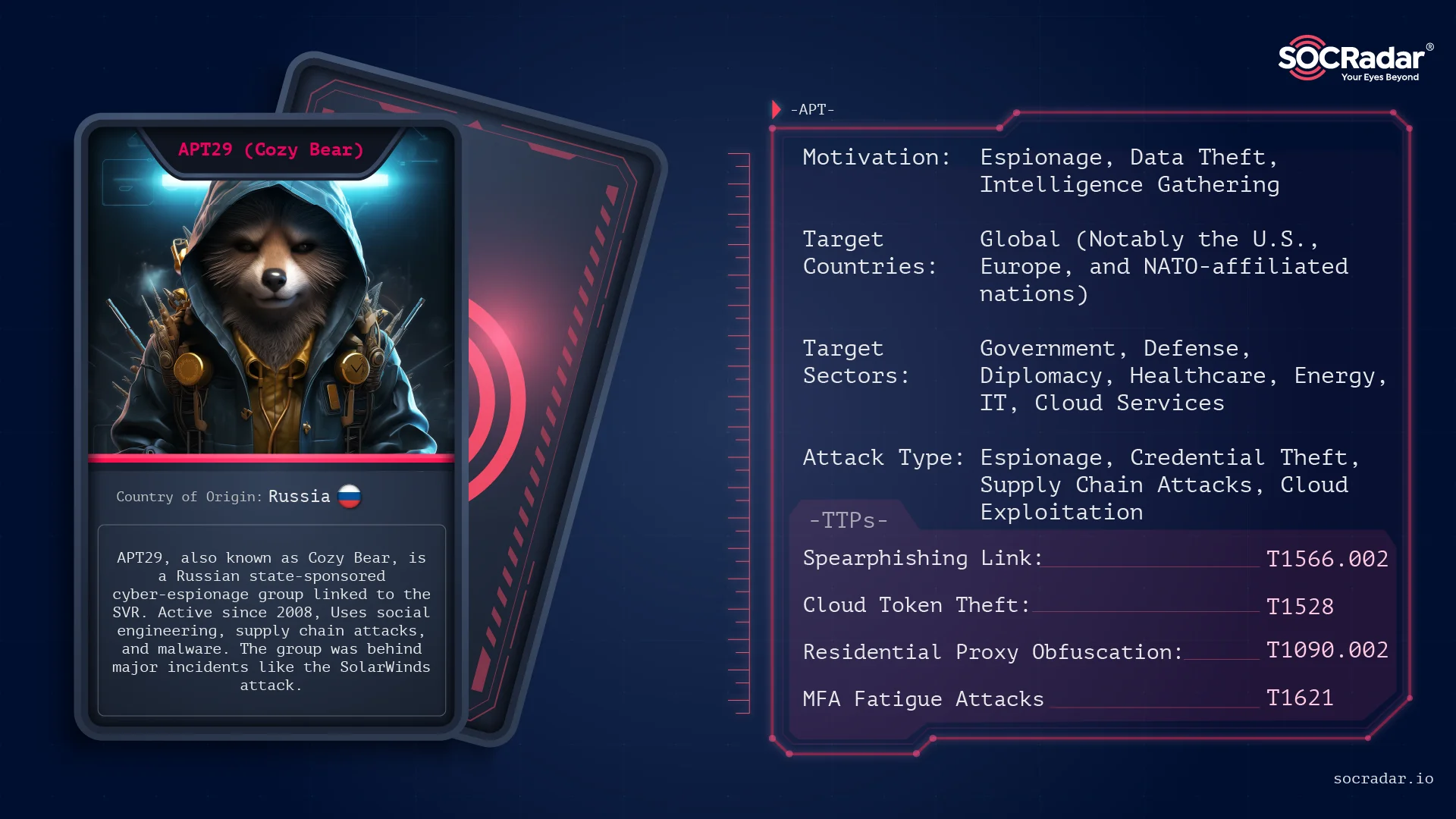
Threat actor card for APT29
The Dutch General Intelligence and Security Service (AIVD) inferred from security camera footage that it is led by the Russian Foreign Intelligence Service (SVR); the US agrees. CrowdStrike, a cybersecurity firm, previously speculated that the group might be linked to the Russian Federal Security Service (FSB). CozyCar, CozyDuke (by F-Secure), Dark Halo, The Dukes (by Volexity), NOBELIUM, Office Monkeys, StellarParticle, UNC2452, and YTTRIUM are some of the nicknames given to the group by different cybersecurity research groups.
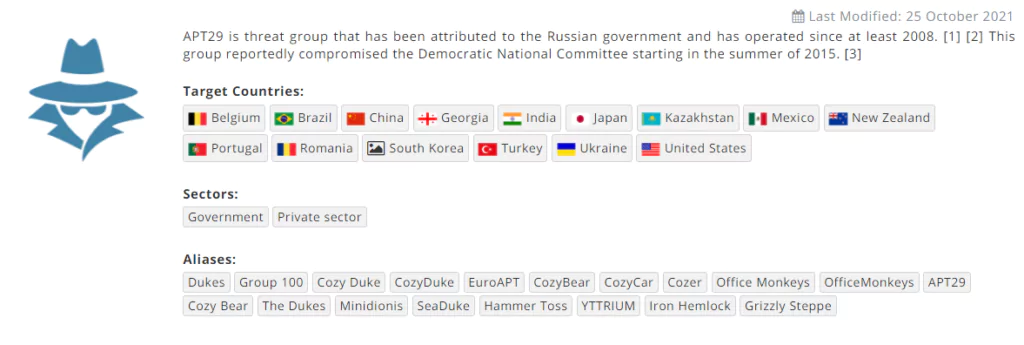
Cozy Bear is a well-resourced, highly dedicated, and structured cyberespionage operation that we believe has been operating for the Russian Federation since at least 2008 to collect intelligence in support of foreign and security policy decision-making,’ according to a 2015 assessment from F-Secure. Cozy Bear has an unusual amount of faith in its ability to keep effectively compromising its targets, as well as in its ability to operate without being detected.
Cyber Attacks Associated with APT29
APT29 and another Russian APT group called APT28 (Fancy Bear) infiltrated the Democratic National Committee’s (DNC) network and caused a data breach, which started in 2015 but was detected in 2016.
ESET investigates Operation Ghost, which is believed to have started in 2013 and affected the Ministry of Foreign Affairs of some European countries. ESET also reports that the group has developed new malware families called the PolyglotDuke, RegDuke, and FatDuke.
Later on, the WellMess malware was observed in attacks against Japanese firms in 2018; however, it was not linked to a specific threat actor then. WellMess was linked to Russia’s APT29 in 2020 when the US, UK, and Canada stated Russian hackers used it in attacks against academic and pharmaceutical research institutes involved in developing the COVID-19 vaccine.
APT29, who are the hackers behind the SolarWinds software supply chain attack and the attacks mentioned above, have continued to look for ways to access enterprise networks by targeting IT and cloud services providers with admin rights on their customers’ systems due to their business connection. In a new report, Microsoft warns that the gang has targeted over 140 cloud service resellers and technology suppliers since May and has succeeded in compromising as many as 14. Moreover, Cozy Bear is the hacker behind the SolarWinds software supply chain attack.
Denmark National Bank has been another victim of the notorious group’s SolarWinds attack. According to a report published in May 2021, Cozy Bear attacked Denmark’s central bank (Denmark’s National Bank) and planted malware that allowed them to access the network for over six months without being noticed.
The SolarWinds campaign is regarded as one of the most sophisticated supply-chain hacks, with 18,000 businesses worldwide downloading trojanized versions of the IT management platform SolarWinds Orion. Despite the hackers’ long-term access, the bank said it found no sign of breach beyond the first stage of the attack, as thousands of other companies did when they installed the trojanized version of SolarWinds Orion.
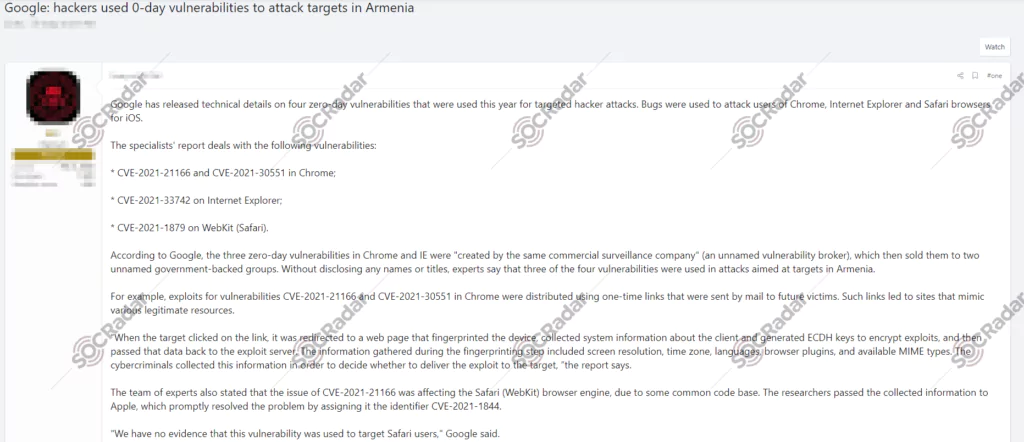
In a blog shared by Microsoft Threat Intelligence Center (MSTIC) in 2021, researchers noted that APT29 has been using the EnvyScout, BoomBox, NativeZone, and VaporRage malware families for its email-based attacks since February 2021, which aims to gain a foothold on various sensitive diplomatic and government entities.
In December 2021, ANSSI shared a threat and incident report of the French national government computer security incident response team (CERTFR). The ANSSI stated that French organizations had been subjected to phishing attacks since February 2021, and the identified TTPs overlapped with the SolarWinds supply chain attack.
In April 2022, a lure document that allegedly belonged to APT29 was found, which contained a malicious script and appeared to have been created by the Israeli Embassy.
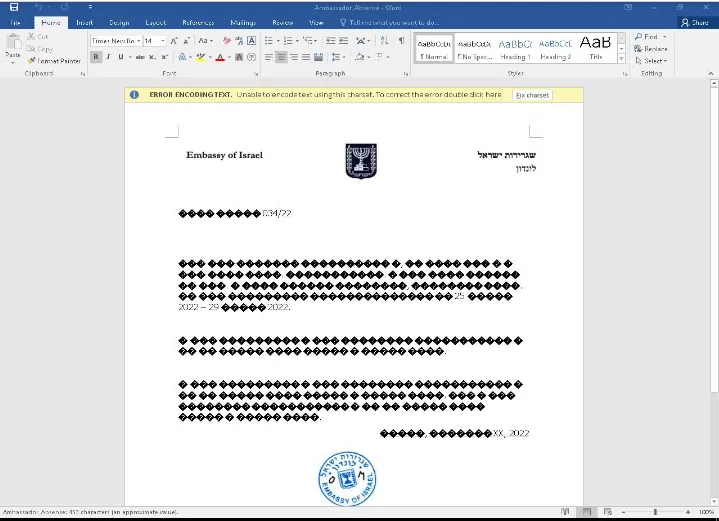
In January 2022, Crowdstrike shared a blog about a campaign called StellarParticle linked to Cozy Bear. The campaign, conducted with GoldMax and TrailBlazer malware, reveals that since mid-2019, APT29 has used an MFA bypass to access Office 365 accounts with stolen cookies.
Cybersecurity researchers observed that the group uses social media platforms (Twitter, Reddit, etc.) or various internet services (Trello, Firebase, etc.) as C2 (Command & Control) communication during its activities.
In the group’s latest campaign, it was found that they have been using the API of Notion, a note-taking application. Based on the group’s latest campaign details, APT29 used the Polish Foreign Minister‘s recent visit to the US as a lure to conduct a spear phishing campaign targeting Western Countries, particularly Western Europe.
The lure document contains a link to download an HTML file from a legitimate online library the group had actively used in its other attacks between January 2023 to February 2023.
Another observed lure document abuses multiple legitimate systems, such as LegisWrite and eTrustEx, which EU nations use to exchange information and transfer data securely. Using these programs shows that the group targets state organizations within the EU.
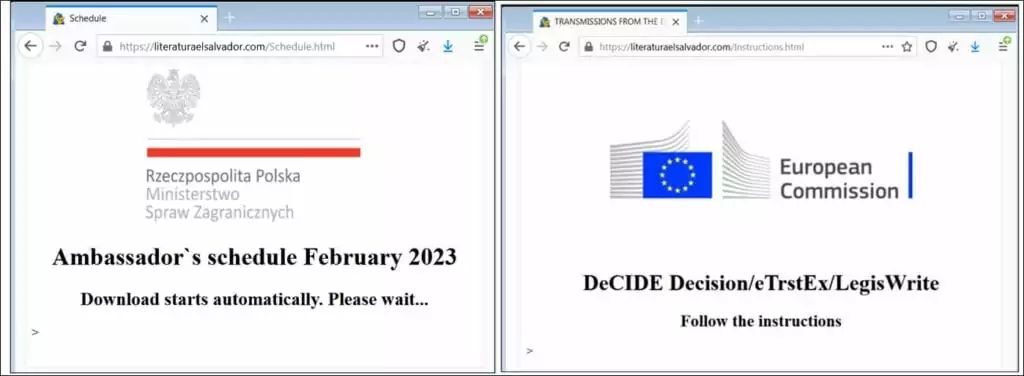
You can follow the updates about the latest campaigns of APT29 from the Messy Adventures of Cozy Bear campaign page in SOCRadar LABS.
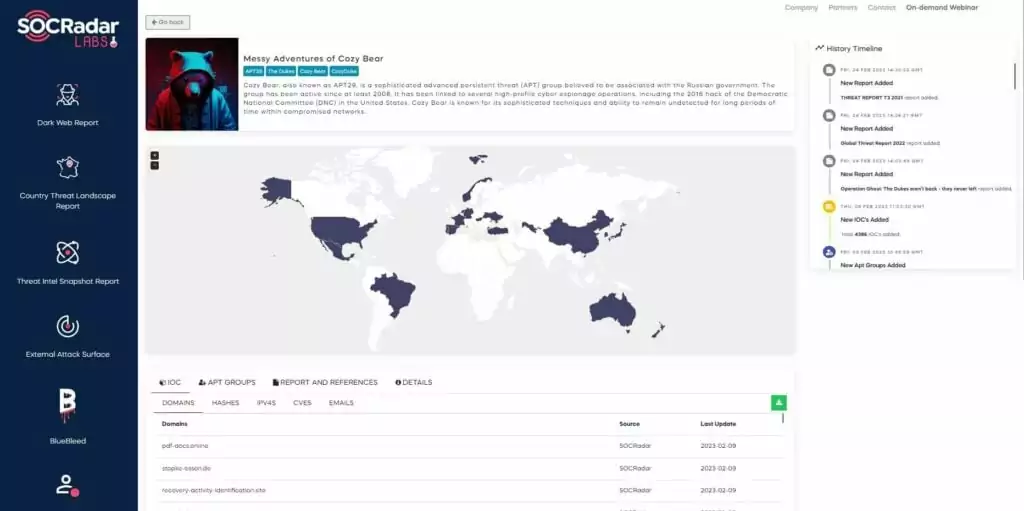
APT29’s New Phishing Lures Involve Microsoft Teams Chats
Microsoft Threat Intelligence has identified highly targeted social engineering attacks, in which APT29 (tracked as Midnight Blizzard by Microsoft), sent phishing lures as Microsoft Teams chats. The threat actor has been posing as tech support staff in Microsoft Teams chats to steal login credentials from numerous global organizations.
To execute their schemes, the hackers used compromised Microsoft 365 accounts belonging to small businesses to create new domains that appeared to be legitimate technical support entities, cleverly incorporating the word “microsoft” in them.
The researchers further disclosed that the hackers targeted a range of sectors, including government, non-government organizations (NGOs), IT services, technology, discrete manufacturing, and media. Approximately 40 global organizations fell victim to these attacks, with Microsoft still actively investigating the incidents that started in late May.
Microsoft was able to mitigate the issue by preventing the attackers from using these domains and continues to investigate the activity. According to the researchers, this recent attack, along with their previous activities, showcases Midnight Blizzard’s persistent use of both new and common techniques to achieve their objectives.
Microsoft has previously linked a surge in credential theft attacks to Midnight Blizzard (APT29), identifying the threat actor as a significant concern. For further details, refer to our recent blog post:
Credential Theft Attacks Surge: Microsoft Raises Red Flag on Midnight Blizzard (APT29)
The Phishing Attack Chain
The threat actor, masquerading as technical support or security team, initiates the attack by sending a Microsoft Teams message request to the target user.
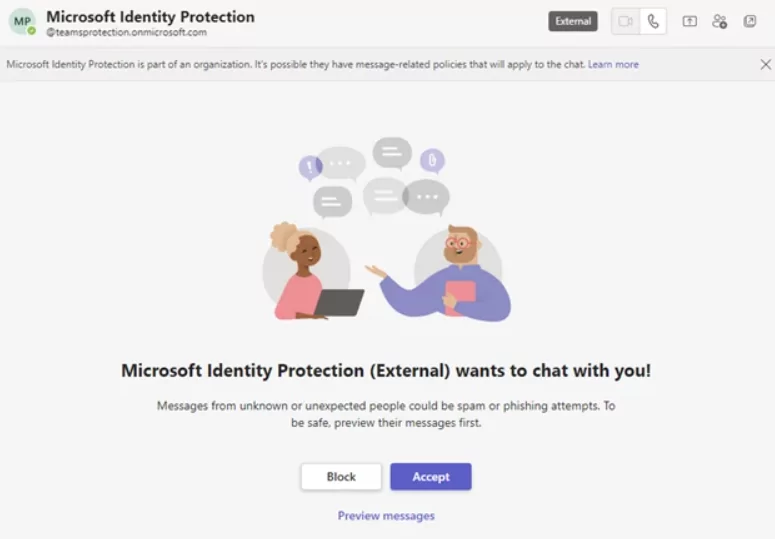
If the target user accepts the request, the attacker will attempt to convince them to enter a code into the Microsoft Authenticator app on their mobile device.
If the targeted user falls for this and enters the code, the threat actor gains a token that allows them to authenticate as the target user. Consequently, the attacker successfully infiltrates the user’s Microsoft 365 account and proceeds with post-compromise activities. These activities typically involve the theft of information from the compromised Microsoft 365 tenant.
Furthermore, the attacker may attempt to add a device to the organization using Microsoft Entra ID (formerly Azure Active Directory). This action is likely an attempt to bypass conditional access policies set up to restrict access to specific resources solely to managed devices.
Indicators of Compromise (IoCs):
- msftprotection.onmicrosoft[.]com
- identityVerification.onmicrosoft[.]com
- accountsVerification.onmicrosoft[.]com
- azuresecuritycenter.onmicrosoft[.]com
- teamsprotection.onmicrosoft[.]com
For more information regarding these attacks, visit Microsoft’s security blog.
APT29 Exploits WinRAR Vulnerability (CVE-2023-38831) in European Embassy Attacks
The National Security and Defense Council of Ukraine has detailed APT29 attacks on European embassies, exploiting the WinRAR vulnerability (CVE-2023-38831). The campaign, which started in September 2023, targeted diplomatic entities in Azerbaijan, Greece, Romania, and Italy.
Known targeted organizations are listed as follows:
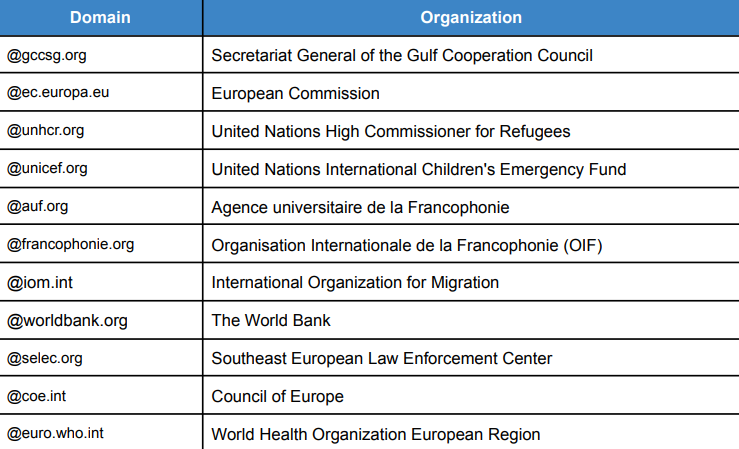
APT29 used BMW car sale-themed lures with a RAR archive (DIPLOMATIC-CAR-FOR-SALE-BMW.rar) to deliver malware through compromised PDFs, exploiting the WinRAR vulnerability to gain entry to compromised systems.
You can learn more about the WinRAR vulnerability, CVE-2023-38831, by visiting our other blog post.
The report underscores the geopolitical implications of the campaign, suggesting that Russia’s Foreign Intelligence Service (SVR) aims to gather intelligence on Azerbaijan’s strategic activities, particularly in the context of the Azerbaijani invasion of Nagorno-Karabakh. The targeted countries – Azerbaijan, Greece, Romania, and Italy – have significant political and economic ties with Azerbaijan, while the report also reminds of a recent arms deal with Italy for military aircraft.
APT29’s use of the WinRAR vulnerability (CVE-2023-38831) and their adoption of Ngrok services for covert communications are highlighted in the report. APT29 employed Ngrok, a tool designed to securely expose local network ports to the internet by tunelling, for storing and communicating with malicious payloads. This adaptation allows adversaries to obfuscate their activities, complicate cybersecurity efforts, and evade detection.
For more information and Indicators of Compromise (IOCs) related to this campaign, refer to the full report.
Malware Used by APT29 / Cozy Bear
The malware used by APT29 could be tailored to the victim’s IT environment by the attackers. Cozy Bear malware’s backdoor components are upgraded over time with cryptography, trojan functionality, and anti-detection changes. The rapidity with which Cozy Bear builds and distributes its components is reminiscent of Fancy Bear’s (APT28) toolkit, including CHOPSTICK and CORESHELL.
Also, some of the malware that APT29 has been observed to use are listed in the table below:
Critical Vulnerabilities Exploited by APT29 to Gain Initial Foothold
APT29 and its activities are closely monitored by The Cybersecurity and Infrastructure Security Agency (CISA), the Federal Bureau of Investigation (FBI), and the National Security Agency (NSA). In April 2021, CISA released a vital advisory on the critical vulnerabilities exploited by APT29.
The vulnerabilities exploited by the APT29 are listed below:
- CVE-2018-13379 – Fortinet FortiOS
- CVE-2019-9670 – Zimbra Collaboration Suite
- CVE-2019-11510 – Pulse Secure VPN Appliance
- CVE-2019-19781 – Citrix ADC Network Gateway
- CVE-2020-4006 – VMware Workspace ONE Access
- CVE-2022-30170 – Windows Credential Roaming Service Elevation of Privilege Vulnerability.
Joint Advisory Warns of Mass Exploitation of Zimbra and TeamCity Servers by APT29
On October 10, 2024, the FBI, NSA, CNMF, and NCSC-UK issued a joint advisory updating on SVR cyber operations and vulnerability exploitation. The advisory warns of ongoing mass exploitation by APT29, specifically targeting unpatched Zimbra and JetBrains TeamCity servers, affecting organizations globally.
CVE-2022-27924 is a command injection vulnerability in Zimbra that allowed the SVR to target hundreds of domains worldwide by injecting arbitrary memcache commands, enabling access to user credentials and mailboxes without interaction. Similarly, starting in September 2023, SVR actors exploited CVE-2023-42793 in JetBrains TeamCity, which allows for arbitrary code execution via insecure handling of paths and authentication bypass.
The advisory further lists vulnerabilities disclosed over the last six years, urging immediate patching and mitigation. These include:
- CVE-2023-20198 (Cisco IOS XE)
- CVE-2023-36745 (Microsoft Exchange)
- CVE-2023-4966 (Citrix NetScaler ADC)
- CVE-2023-6345 (Google Chrome)
- CVE-2023-37580 (Zimbra XSS)
- CVE-2018-13379 (Fortinet FortiGate SSL VPN)
- CVE-2023-29357 (SharePoint Server)
- CVE-2023-24955 (SharePoint Server)
- CVE-2023-35078 (Ivanti Endpoint Manager Mobile)
For further information and the full list of vulnerabilities, visit the advisory.
Defending Against APT Groups
Patch management and other strategies can assist in the defense against APT29 and other similar threats:
- Increase your efforts to identify digital shadow assets, including the cloud hosts, by using an Attack Surface Management solution
- Keep the internet-facing technologies and appliances patched at all times since threat actors continuously scan to detect these blind spots.
- Be wary of external remote services like RDP, which is known to be vulnerable. If not necessary, close it down.
- Quickly take action when you’re alerted by your Threat Intelligence or Digital Risk Protection platform about compromised employee credentials.
- Continuously check for potential weaknesses on your internet infrastructure like expired domains, SSL certificates, or subdomains.
- Keep the password hygiene within the organization at peak condition at all times.
- Make sure EDR and logging functions are in place to detect suspicious actions within the network. It is only one component of the protection plan.
Joint Advisory on APT29’s Recent Initial Cloud Access Tactics
CISA, alongside the UK National Cyber Security Centre (NCSC) and other international partners, released a joint advisory titled “SVR Cyber Actors Adapt Tactics for Initial Cloud Access.” This advisory outlines recent TTPs utilized by APT29 to gain initial access into cloud environments, along with recommended mitigations for network defenders and organizations.
As organizations shift to cloud-based infrastructure, the SVR has adjusted its tactics accordingly, targeting cloud services rather than exploiting on-premises network vulnerabilities for initial access. Also, the expansion of APT29’s targets, including government, healthcare, energy, aviation, education, law enforcement, and military organizations, has been observed by the NCSC.
According to the advisory, threat actors have been employing the following TTPs over the last 12 months:
Access via Service and Dormant Accounts:
- SVR campaigns utilize brute forcing and password spraying to access service accounts, which lack multi-factor authentication (MFA) and are often highly privileged [T1110].
- Dormant accounts of former employees are also targeted for unauthorized access [T1078.004]. During an incident where all users were required to reset their passwords, APT29 actors have been observed logging into inactive accounts and following instructions to reset the passwords.
Cloud-Based Token Authentication:
- SVR actors use tokens to gain access to accounts, eliminating the need for passwords [T1528]. To enhance security against this tactic, administrators should adjust the validity time of tokens on cloud platforms.
Enrolling New Devices to the Cloud:
- SVR bypasses password authentication and MFA using techniques like password spraying and MFA fatigue [T1621].
- After bypassing these systems to gain access to the cloud environment, if device validation rules are not enforced, the threat actors register their devices on cloud tenants for access [T1098.005].
Residential Proxies:
- SVR actors utilize residential proxies to obscure malicious connections, making traffic appear to originate from IP addresses within internet service provider (ISP) ranges used for residential broadband customers. This practice makes it challenging to distinguish them from typical users [T1090.002]. To mitigate this, detection of suspicious activity should rely on various sources beyond IP addresses, such as application and host-based logging.
TTPs such as the use of residential proxies and exploitation of system accounts align with those reported by Microsoft as recently as January 2024, according to CISA.
The advisory also warns that once APT29 actors gain initial access, they can deploy advanced post-compromise capabilities like MagicWeb.
Preventing initial access to the cloud environment can effectively combat SVR’s attempts, unlike on-premises systems where more of the network is typically exposed to threat actors. By mitigating the mentioned initial cloud access vectors outlined in the joint advisory, organizations can significantly bolster their defenses against this sophisticated threat.
Furthermore, to address cloud security challenges effectively, organizations can leverage SOCRadar’s Attack Surface Management (ASM) solutions. SOCRadar offers continuous monitoring of assets, extending its capabilities to cloud environments through the Cloud Security Module (CSM), which covers cloud services and buckets.
With SOCRadar CSM, the status of your buckets is continuously monitored, providing an additional layer of security and peace of mind with timely alerts. This ongoing vigilance ensures that any potential security gaps are promptly identified and addressed, thereby strengthening the organization’s cloud environment against threats.

Monitoring cloud buckets via SOCRadar ASM. Learn more about the CSM module here.
































